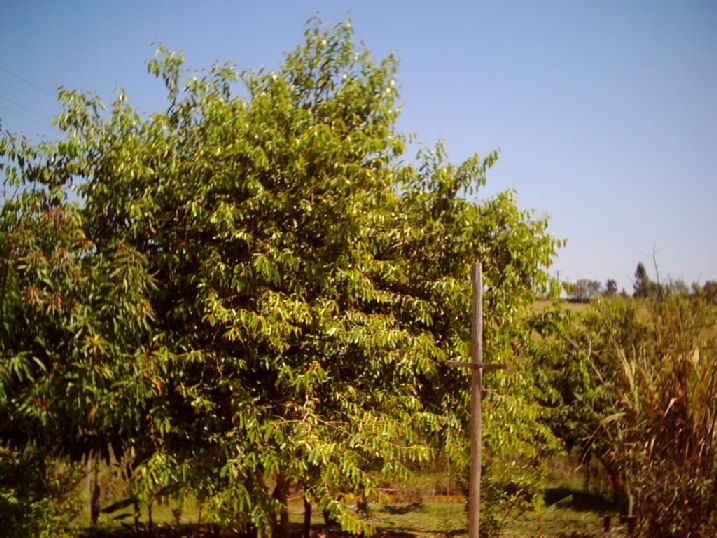

Syzgium cumini (Jambul Tree, Cinnamon Apple)
The Jambul is an evergreen fast-growing deciduous tree from the genus Syzgium and the family Myrtaceae, the height of about 50 to 100 feet can be reached. The bark is grey. It has alternate, ovate, smooth leaves, which are smelling of turpentine. Its inflorescences are laterally, the flowers are white. The nut-sized fruits are dark red at first, then purple to almost black-looking berries, they are edible and taste sweet and sour. The berries are usually processed into juice. the first fruits do form when the trees are four to seven years old. As a pure tropical tree the Jambul does not survive frosts. Every day the area of one football field with this tree is cutten, because it is not so rich as another occurance of tropical trees.
The distribution of Jambul ranges from India and Sri Lanka eastward through the Malay Peninsula and Southern China to Northeastern Australia. It is also grown now in the West Indies (Caribbean Islands), Florida and Mauritius, and also in Brazil.
All plant parts can be used pharmacologically. Ingredients are tannins and resins. The drug designation for the bark of the Jambul is Syzygii jambolani cortex.
The in all parts of the tree existing tannins contribute astringent, anti-inflammatory, antibacterial, antiviral and neutralizing poisons. Teas and infusions are suitable for the treatment of diarrhea.
In homeopathy Syzgium cumini dillution is used as an antidiabetic agent. Syzygium seeds contribute to lower blood pressure.
We have 3 larger specimens in our garden.

Our specimen in September 2008.
Back to the Agricultural Plant List
Created by Joachim Jaeck on December 1st, 2009